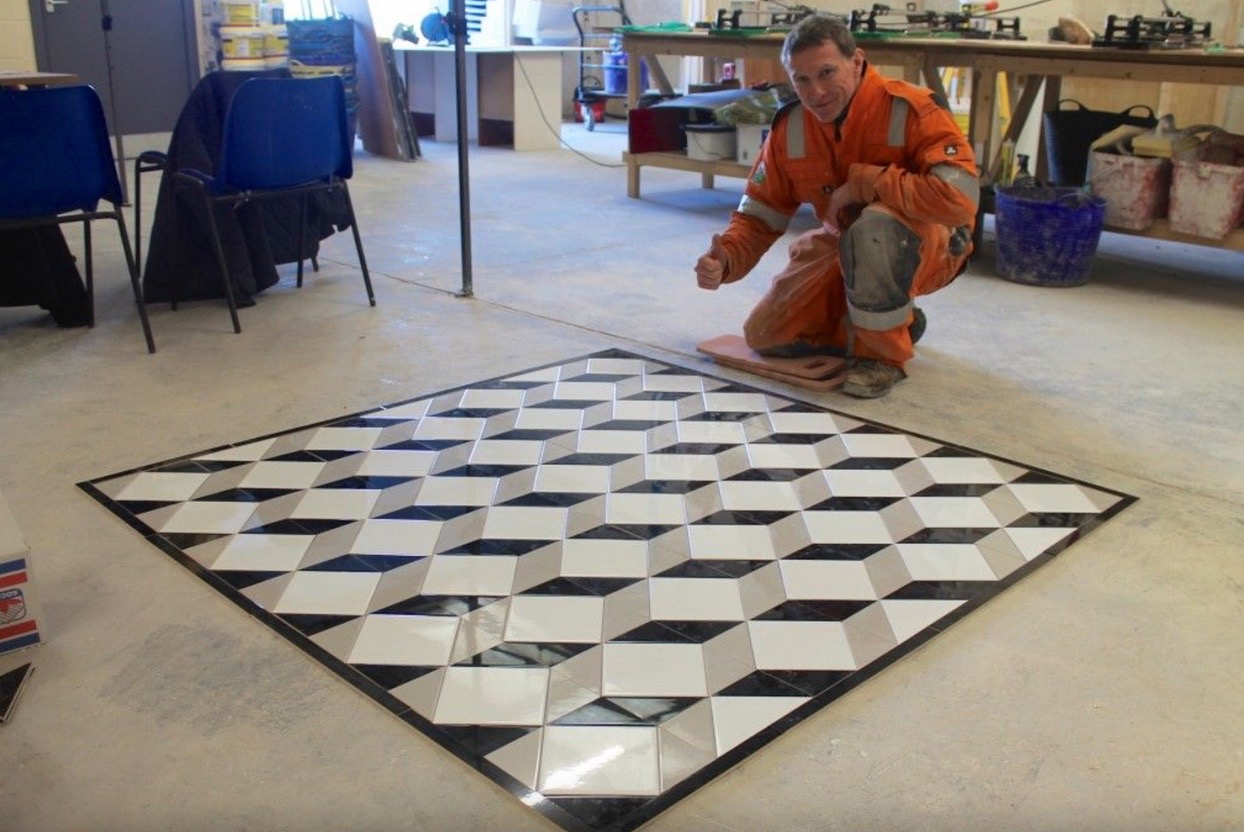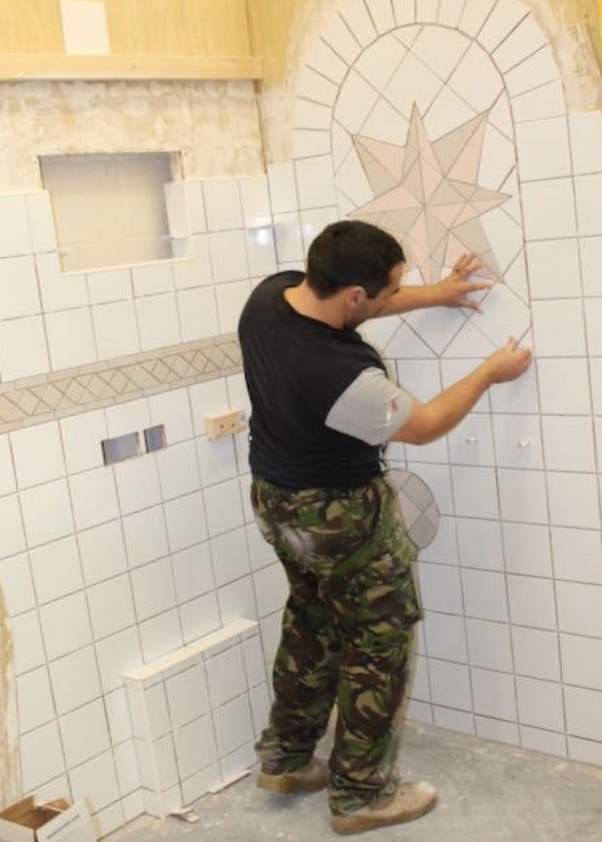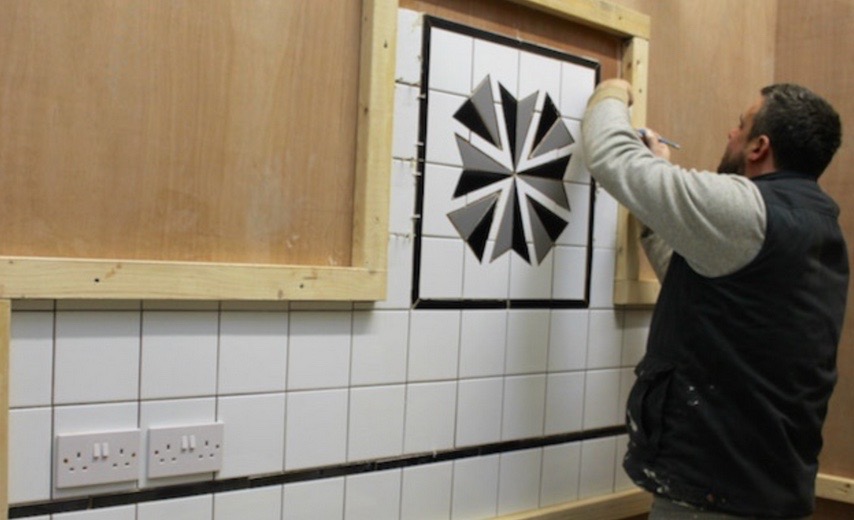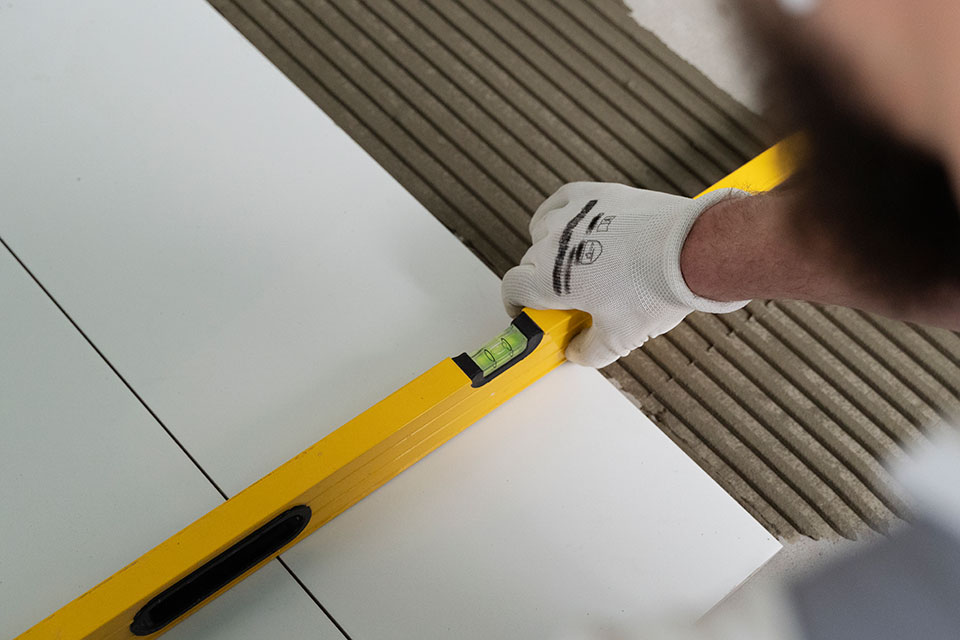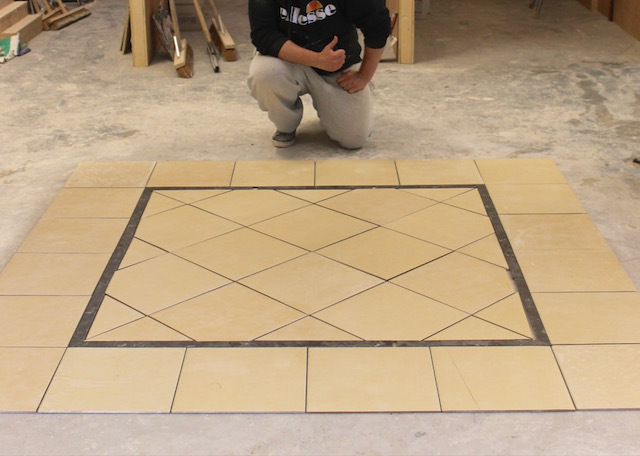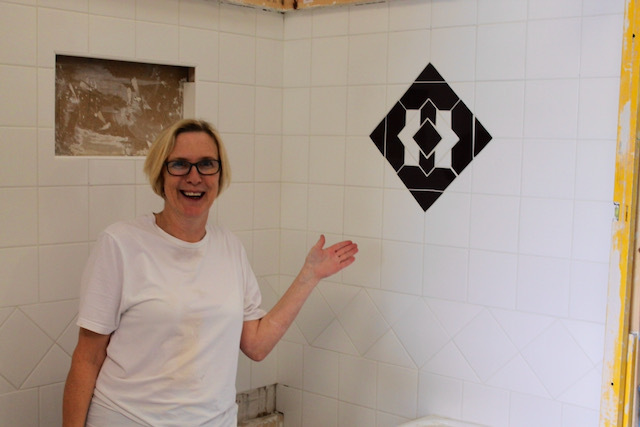Transform your space into an artistic canvas with creative tiling patterns. Tiles are not just for functionality; they can be a form of art, adding colour, texture, and pattern to any room. We explore innovative ideas for tiling patterns that can add visual interest to your space. Creating visually interesting spaces with tiles can transform any room into a work of art. Here’s how to infuse creativity into your tiling projects:
Herringbone Pattern
This classic layout, where rectangular tiles are arranged in a zigzag pattern, adds sophistication and dynamic movement to floors and walls. It’s ideal for creating a focal point in kitchens or bathrooms. Ideal for floors and walls, this classic pattern creates a focal point in kitchens and bathrooms, adding an element of visual interest that captivates the eye. The interlocking arrangement of rectangular tiles in a herringbone design not only enhances the aesthetic appeal but also lends a sense of structure and elegance to the space.
Chevron Pattern
Similar to the herringbone, the chevron pattern features tiles that meet at perfect points to create a seamless V-shape. This continuous line draws the eye along its path, perfect for elongating small spaces and adding a touch of sleekness. The chevron pattern offers a modern twist on traditional tiling, providing a linear aesthetic that can make spaces appear more expansive and orderly. A tiling course can offer valuable insights into achieving the precision required for this striking pattern.
Basket Weave Pattern
Emulating the intricacy of a woven basket, the basket weave pattern interlocks rectangular tiles to create a captivating, textured look. This design adds depth and a tactile quality to the floor or wall, evoking a vintage or artisanal feel. Especially effective in entryways or bathrooms, the basket weave pattern introduces an element of rustic charm and complexity to the tiling layout.
Hexagon Tiles
Hexagonal tiles offer a modern and geometric approach to tiling, creating a honeycomb-like effect that is both eye-catching and contemporary. These tiles fit together seamlessly, providing a unique pattern that can be adapted to fit both large areas and smaller spaces like backsplashes. The versatility and modern appeal of hexagon tiles make them a popular choice for those looking to introduce a distinctive geometric element into their design.
Mosaic Tiles
Mosaic tiles, known for their small size and colourful possibilities, allow for the creation of intricate patterns and scenes. These tiles can add a personal touch and artistic flair to any room, perfect for customising shower walls, kitchen backsplashes, or creating decorative borders. The flexibility in colour and design of mosaic tiles enables endless possibilities for personalization and artistic expression in tiling projects.
Subway Tiles in New Layouts
While subway tiles are traditionally laid in a horizontal brick pattern, experimenting with new layouts like vertical stacks, crosshatch patterns, or even a herringbone layout can modernise the classic look. To master these innovative layouts, searching for “https://www.tiling-courses.co.uk/“ can be a great way to find local workshops or classes that teach the skills needed to execute these contemporary designs effectively. This versatility allows for a fresh take on a beloved tile style, providing the opportunity to create a unique and contemporary space.
Mixed Materials
Incorporating different tile materials, such as ceramic with glass or stone with metal, adds contrast and interest to your design. This approach can help delineate spaces within a room or add an eclectic, multi-textured touch. Mixed materials in tiling can elevate the design by introducing varied textures, colours, and finishes, creating a rich and dynamic visual experience.
Colour Gradation
Using tiles in varying shades of the same colour to create a gradient effect can introduce a serene and calming atmosphere to your space. This technique is particularly effective in bathrooms and kitchens, where a subtle transition of colour can produce a soothing and harmonious aesthetic. The gradation of colour can also enhance the perception of space, making it feel more open and airy.
Geometric Patterns
Bold geometric patterns, achieved through shaped tiles or coloured tile layouts, can transform a floor or wall into a striking statement piece. These patterns are especially suited to contemporary spaces, where strong lines and shapes can create a dramatic and impactful visual statement. Geometric tiling offers a dynamic and bold approach to design, turning ordinary spaces into modern masterpieces.
Large Format Tiles
Using large format tiles can make a small space appear larger and minimize the visual interruption of grout lines, resulting in a sleek and modern look. These tiles, suitable for both walls and floors, can create a dramatic effect, offering a clean and expansive feel to the room. Large format tiles present a minimalist and elegant solution for contemporary spaces, emphasising simplicity and spaciousness.
3D Tiles
Tiles with raised, embossed, or sculptural designs add a tactile element to spaces, creating a unique visual and textural experience. These 3D tiles can bring depth and dimension to a surface, making it not only a visual focal point but also an interactive feature that invites touch and exploration.
Monochromatic vs. Bold Patterns
Choosing a monochromatic tile scheme can create a subtle, sophisticated backdrop, enhancing the room’s overall calm and elegance. Conversely, opting for bold, contrasting colours and patterns can inject energy and vibrancy into a space, making it lively and dynamic. This choice allows for personal expression and can dramatically alter the room’s mood and perceived size, with monochromatic schemes offering a timeless elegance and bold patterns delivering a striking visual impact.
Tile Rugs
Create ‘rugs’ or ‘runners’ with tiles on floors to define spaces, add colour, or introduce patterns without the need for actual rugs. This approach is particularly beneficial in high-traffic or wet areas where traditional rugs would wear quickly or pose a risk for mould and dampness. Tile rugs can also anchor furniture groupings, add warmth to a room, and offer an opportunity to incorporate decorative elements into the flooring design.
Accent Walls
An accent wall with a striking tile pattern or colour can transform a room from simple to stunning, making a bold statement and serving as the centrepiece of the room. This design element can draw attention, create a focal point, and add depth to the space. Accent walls can also be used to experiment with bolder colours or patterns that might be overwhelming if used throughout the entire room, allowing for a creative and impactful design feature.
Mix and Match
Don’t be afraid to mix patterns and sizes to create a custom look. A blend of large and small tiles in different patterns can add a unique character to your space, breaking the monotony and injecting a playful element into the design. This approach allows for a personalized space that reflects individual style, with the juxtaposition of different tile designs creating a dynamic and cohesive look. Mixing and matching tiles can also optimize the visual interest and texture of the space, making it distinctly yours.
By exploring these creative ideas for tiling patterns, you can add visual interest and personality to your space, making it uniquely yours. Whether you’re aiming for a subtle enhancement or a dramatic transformation, the right tile pattern can significantly impact the look and feel of your room.
